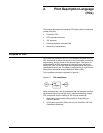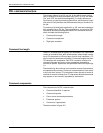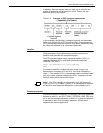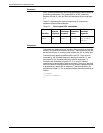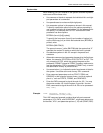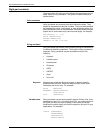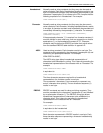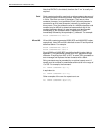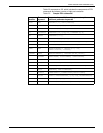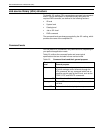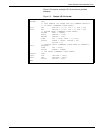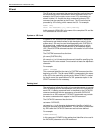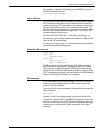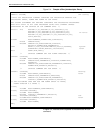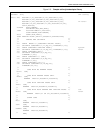
PRINT DESCRIPTION LANGUAGE (PDL)
2-8 XEROX DOCUPRINT 180 LPS PDL REFERENCE
Note that EBCDIC is the default, therefore the E ’xxx’ is usually not
required.
Octal Octal constants should be used only as string constants because of
the control program conversion process. Each octal character results
in 3 bits. One word can store 3 characters. Their use as value
constants, however, is not prohibited. Each 3-bit octal character is
converted to an 8-bit octal character, internally, by prefixing two
binary zeros. Thus, the arithmetic value of a multiple-character octal
constant may be difficult to determine because each digit in the
constant has been altered. An octal constant must be preceded
immediately by the characters letter O apostrophe (O) and
immediately followed by the apostrophe (’) character. For example:
BLOCK CONSTANT=O’07070707’
H2 and H6 H2 and H6 constants generate H2000 BCD and H6000 BCD codes,
respectively. Use of H2 and H6 is identical to use of E and A prefixes
described above. For example:
BLOCK CONSTANT=H2’373737’
BLOCK CONSTANT=H6’373737’
Since H2000 and H6000 BCD are defined as 6-bit codes (refer to
appendix C), no specification greater than X'3F' generates a legal
character. If anything from X'40' to X'FF' is coded, PDL generates an
error message and replaces the bad character with a blank.
String constants may be preceded by an optional repeat count. A
repeat count is enclosed in parentheses and must be in the range of
1 to 255. For example, the command:
T1: TABLE CONSTANT=(3)’*’;
is equivalent to:
T1: TABLE CONSTANT=(’***’);
Other examples of the use of a repeat count are:
T1: TABLE CONSTANT=(3)O’27’;
T2: TABLE CONSTANT=(4)X’C1’;




